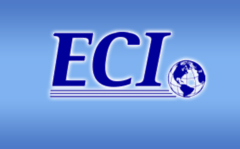Robust Design And Operation Of Quasi-Continuous Adenovirus Purification By Two-column, Simulated Moving-Bed, Size-Exclusion Chromatography
Abstract
Adenoviruses (Ads) are considered one of the most suitable platforms for production of viral vaccines and gene therapy vectors. Their broad tissue tropism and large transgene packing capacity make them attractive candidates for innovative virotherapies. Ads can be produced in a complementary cell line in both adherent and suspension culture systems, such as HEK-293 or PER-C6 cells, or A549 for oncolytic therapies.
Liquid chromatography is currently the core technique for vector purification, and its use is often integrated vertically within the downstream processing (DSP) strategy, as it easily fits into the early capture stage as well as into the final purification phase. The use of high-performance liquid chromatography (HPLC) for large-scale adenoviral purification is an already established method, including ion exchange (IEX), size exclusion (SEC), hydrophobic interaction, and immobilized metal affinity chromatography. Unlike traditional processes based on CsCl-gradient purification, HPLC offers a straightforward linear scale-up path, and procedures for purifying up to around 1014 input particles have been reported. SEC and ultra/diafiltration (usually by tangential flow filtration) are two other widely used processes at the very latest stage for formulating the product.
One process-based way to improve the performance of the DSP chromatographic steps is by changing to a (quasi-)continuous processing mode, which, in principle, yields higher throughput, lower buffer consumption, higher capacity utilization of the stationary phase and reduced column volume, hence increased productivity.
In this work, a simple, yet efficient, two-column simulated moving-bed (2CSMB) process for purifying adenovirus serotype 5 (Ad5) by size-exclusion chromatography (SEC) is presented and validated experimentally, and a general procedure for its robust design and operation under parameter uncertainty is described. The pilot-scale run yielded a virus recovery of 86% and DNA and HCP clearances of 90% and 89%, respectively, without any fine-tuning of the operating parameters. This performance compares very favorably against that of single-column batch chromatography for the same volume of size-exclusion resin.
To improve the robustness of the 2CSMB-SEC process, a general procedure for its design under parameter uncertainty is proposed under the framework of rigorous optimization theory. The optimal values of the operating variables are chosen only among candidates that are robust feasible, that is, that remain feasible for all possible variations of the uncertain parameters within their uncertainty intervals. In practice the nominal design problem is replaced by a worst-case design problem.
The procedure was successfully employed to find the optimal robust values of the step durations when both the interparticle porosity and column volume are subject to two types of uncertainties. In one case the parameters are uncorrelated, uniformly distributed random variables, whereas in the other case they are normally distributed random variables. Moreover, in the second case the 2CSMB-SEC operating conditions were optimized to yield a given probability of success of satisfying both product quality specifications, say 95%, so that on average at least 95 out of 100 attempts to pack the two columns yield purified batches in which the product is within the specifications—this is achieved while maximizing the feed throughput.
